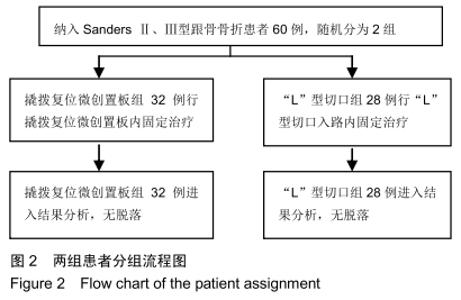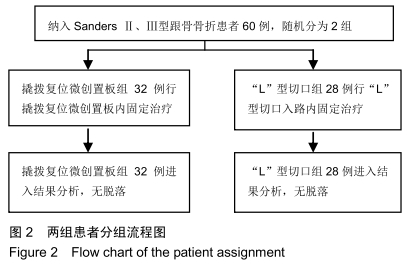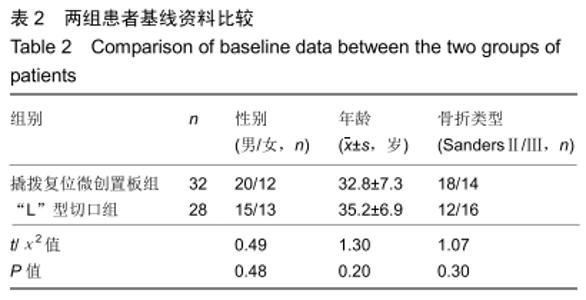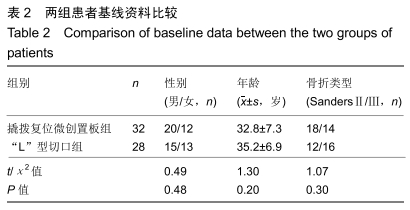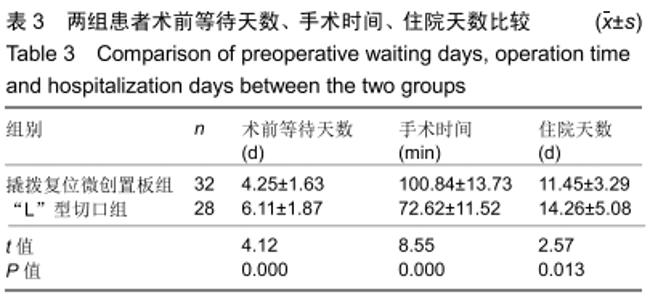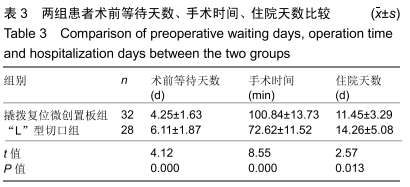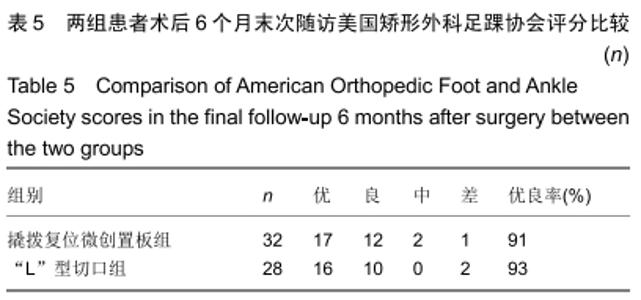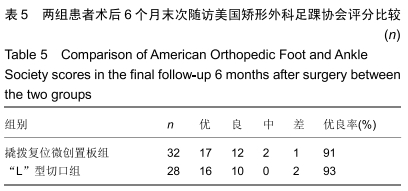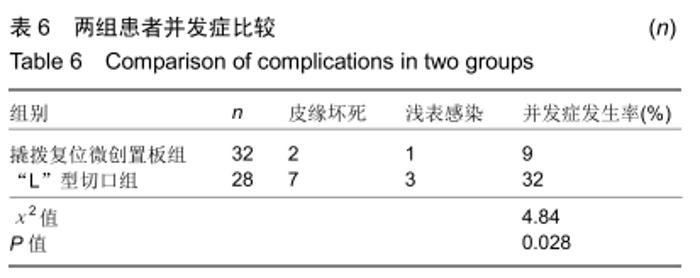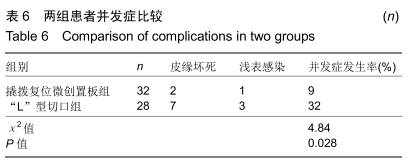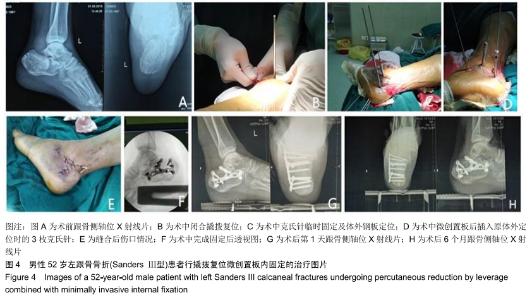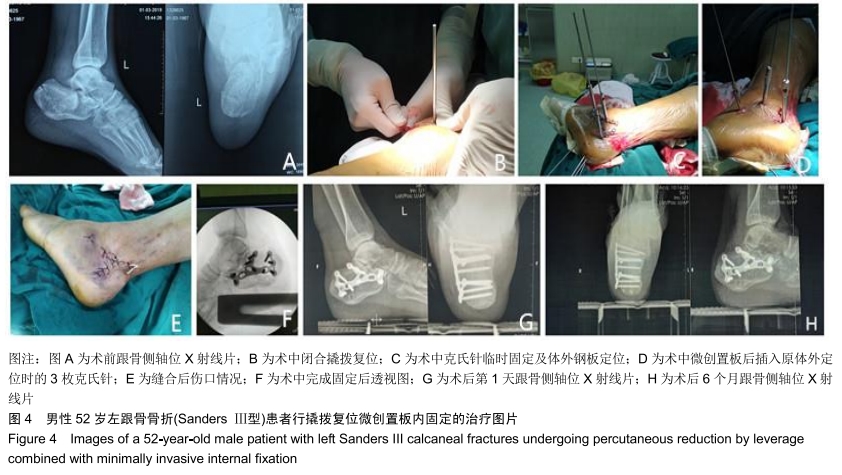[1] WALLIN KJ, COZZETTO D, RUSSELL L, et al. Evidence- based rationale for percutaneous fixation technique of displaced intra-articular calcaneal fractures:a systematic review of clinical outcome.Foot Ankle Surg. 2014;53(6): 740-743.
[2] BENIRSCHKE SK, SANGEORZAN BJ. Extensive intraarticular fractures of the foot:surgical management of calcaneal fractures. Clin Orthop Relat Res.1993;(292): 128-134.
[3] BUCKLEY R, TOUGH S, MCCORMACK R, et al.Operative compared with nonoperative treatment of displaced intra-articular fractures:a prospective,randomized,controlled multicenter trial. Bone Joint Surg Am.2002;84:1733-1744.
[4] LIM EV, LEUNG JP. Complications of intraarticular calcaneal fracture. Clin Orthop Relat Res. 2001;(391):7-16.
[5] SOOHOO NF, FARNG E, KRENEK L, et al. Complication rates following operative treatment of calcaneus fractures. Foot Ankle Surg. 2011;17(4):233-238.
[6] 郭琰,周方,田耘,等.闭合复位微创接骨板内固定治疗跟骨骨折[J].中华创伤骨科杂志,2015,17(3):238-242.
[7] 武勇,王岩,王金辉,等.距下关节撑开植骨融合治疗跟骨骨折畸形愈合[J].中华外科杂志,2010,48(9):655-657.
[8] VAN HOEVE S, POEZE M. Outcome of minimally invasive open and percutaneous techniques for repair of calcaneal fractures:a systematic review. J Foot Ankle Surg. 2016;55(6): 1256-1263.
[9] KIEWIET NJ, SANGEORZAN BJ.Calcaneal fracture management:extensile lateral approach versus small incision technique. Foot Ankle Clin. 2017;22(1):77-91.
[10] YAO H, LIANG T, XU Y, et al. Sinus tarsi approach versus extensile lateral approach for displaced intra articular calcaneal fracture:a meta analysis of current evidence base. J Orthop Surg Res. 2017;12(1):43-47.
[11] KITAOKA HB,ALEXANDER IJ,ADELAAR RS,et al.Clinical rating systems for the ankle-hindfoot,midfoot,hallux,and lesser toes. Foot Ankle Int.1997;18(3):187-188.
[12] BERGIN PF, PSARADELLIS T, KROSIN MT, et al. Inpatient soft tissue protocol and wound complications in calcaneus fractures. Foot Ankle Int. 2012;33(6):492-497.
[13] VAN HOEVE S, POEZE M. Operative versus non-operative treatment for closed, displaced, intra-articular fractures of the calcaneus: randomised controlled trial. Nederlands Tijdschriftvoor Traumachirurgie. 2015; 23(1):18.
[14] 武勇.跟骨骨折的治疗进展[J].中国骨伤,2017,30(12):1077-1079.
[15] 张英泽.注重临床研究,提高我国足踝外科诊治水平[J].中华骨科杂志,2013,33(4):289-290.
[16] 孔长庚,郭祥,吴多庆. 锁定钢板及锁定螺钉内固定治疗Sanders Ⅲ型跟骨骨折:改良“L”型切口植骨与“L”型切口非植骨1年随访比较[J]. 中国组织工程研究, 2019, 23(16):2500-2505.
[17] 陈小亮,叶哲伟,刘建湘,等.开窗直视下联合复位内固定治疗跟骨骨折[J]. 临床骨科杂志,2014,17(5):583-586.
[18] BERGIN PF, PSARADELLIS T, KROSIN MT, et al.Inpatient soft tissue protocol and wound complications in calcaneus fractures. Foot Ankle Int. 2012;33(6): 492-497.
[19] 苗旭东.微创技术治疗跟骨骨折进展[J].中国骨伤,2018,31(7): 591-593.
[20] 凌泽文.经皮撬拨复位克氏针内固定和切开复位钢板内固定治疗SandersⅡ型跟骨骨折的效果对比[J].中国医药科学,2018, 8(18):226-229.
[21] 曾凡辉,涂淑强,帅永明,等. 经皮撬拨复位空心钉与跗骨窦切口钢板内固定治疗跟骨骨折的比较[J].中国骨与关节损伤杂志, 2018,33(6):653-655.
[22] 刘亮,周恩瑜,陈宇. 经皮撬拨复位空心螺钉内固定Sanders Ⅱ、Ⅲ型跟骨骨折[J]. 局解手术学杂志,2018,27(8): 581-585.
[23] VAN HOEVE S, POEZE M.Outcome of minimally invasive open and percutaneous techniques for repair of calcaneal fractures:a systematic review. J Foot Ankle Surg.2016;55(6): 1256-1263.
[24] KIEWIET NJ, SANGEORZAN BJ.Calcaneal fracture management:extensile lateral approach versus small incision technique. Foot Ankle Clin. 2017;22(1):77-91.
[25] 吴旻昊,孙文超,闫飞飞,等.经微创跗骨窦切口入路与传统外侧L 形切口入路比较治疗跟骨骨折的Meta分析[J].中国骨伤, 2017, 30(12): 1118-1126.
[26] ALLMACHER D, GALLEN KS, MARSH J. Intra-articular calcaneal fractures treated non-operation and followed sequentially for 2 decades. J Orthop Trauma. 2006;20(7): 464-469.
[27] 唐佩福,王岩,张伯勋,等. 解放军总医院创伤骨科手术学[M]. 北京:人民军医出版社,2014:630-631.
[28] BACKES M, SCHEPERS T ,BEEREKAMP MS, et al.Wound infections following open reduction and internal fixation of calcaneal fractures with an extended lateral approach. Int Orthop. 2014;38(4): 767-773.
[29] BRUCE J, SUTHERLAND A. Surgical versus conservative interventions for displaced intra-articular calcaneal fractures. Cochrane Database Syst Rev. 2013;(1):CD008628.
|
